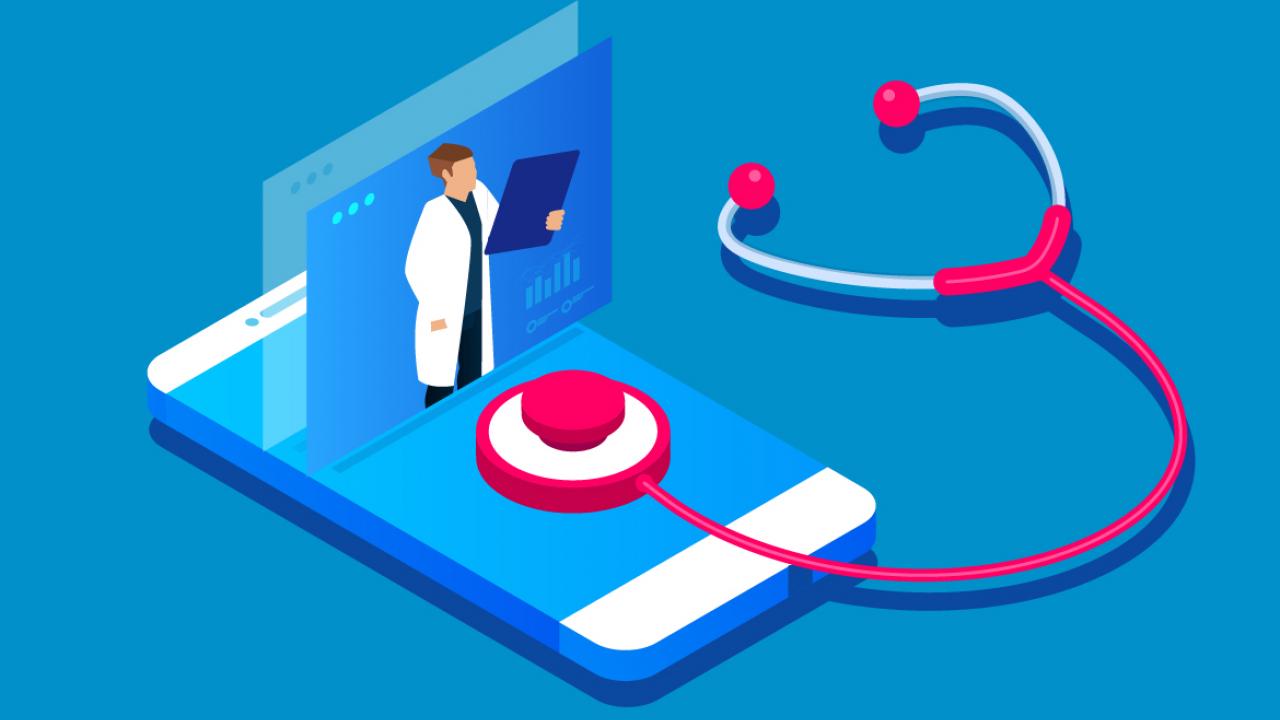
The explosive growth of telehealth during the COVID-19 pandemic is well-known. What’s less clear is how delving into data from the past 10 months can help physicians and health care organizations learn the best use of the technology to help patients.
There is plenty of data to examine. Between mid-March and mid-October of last year, nearly 25 million Medicare beneficiaries received services via telehealth, while Medicaid and CHIP beneficiaries received nearly 35 million services via telehealth last year, according to Jared Augenstein, a director at Manatt Health.
Taken together, this represents an almost 3,000% jump over the prior year, Augenstein said while moderating a panel discussion on “Advancing Telehealth for Patients and Physicians” at the 2021 AMA State Advocacy Summit, held virtually this year due to the pandemic.
The panelists explored how the pandemic accelerated advancements and swift adoption of telehealth, its impact on the delivery of care and the need to expand coverage, ensure fair payment and promote broad access regardless of ZIP code or digital literacy.
“Now we're really trying to figure out how do we focus on optimization and sustainability of telehealth,” said panelist Meg Barron, the AMA’s vice president of digital health innovations. “This is a moment in time where everyone should be asking questions around: Is this the right way we should be doing it?”
Barron described how the AMA is working with Manatt on research assessing the value of virtual care.
Mostly, people have been looking at telehealth from the perspective of financial outcomes, rather than looking at it holistically and from the perspective of other value streams such as health equity, patient access, physician and patient experience, and—most importantly—clinical outcomes, Barron said.
The AMA and Manatt have been conducting a series of qualitative interviews with leading health care organizations to better understand how they are aligning and setting up their strategies for virtual care to get at those value streams, Barron said. Plans call for using this research to develop a “pragmatic framework,” with case studies from different practice settings that physicians can use to build their own virtual care strategies.
Just a tool, not a service
“It was just stunning how quickly it was adopted by folks,” said panelist Kenneth B. Simons, MD, the Medical College of Wisconsin’s senior associate dean of graduate medical education and accreditation.
Dr. Simons added, however, that “telehealth is a tool,” and “it's no different than my stethoscope.”
“As we all know, telehealth is really just a delivery mechanism. It's not a service—the service is what we provide as physicians,” he added.
An ophthalmologist, Dr. Simons serves as the chair-elect of the Federation of State Medical Boards (FSMB), which he said is conducting its own research, including an examination of telehealth-related patient complaints.
“We all need data,” he said. “We need data to find out whether this has helped or whether this has hurt in some ways.”
The FSMB is also looking into telehealth’s impact on opioid prescribing and if there have been issues such as patient-verification problems with visits conducted over the telephone.
Making policy changes permanent
Making policy changes permanent
Panelist Zeke Silva, MD, chair of the AMA RVS Update Committee (RUC) and co-chair of the AMA’s Digital Medicine Payment Advisory Group (DMPAG), noted that allowing and paying for audio-only visits was one of the most significant regulatory changes made by the Centers for Medicare & Medicaid Services during the pandemic to facilitate telehealth’s use.
Dr. Silva said parity between in-person and telehealth visits was quickly established, but “what we were hearing on the ground from our local physicians was: Hey, our patients, aren't all plugged into Zoom and these types of platforms that we use, and many of them depend on the telephone.”
“Those policy changes allowed telemedicine, for all of the appropriate reasons—distancing, gaining access, health equity, all of the above—to come forward in a remarkably fast manner,” he said.
These telehealth-friendly policy changes, however, are only temporary and are linked to the duration of the COVID-19 public health emergency, so Dr. Silva urged physician advocates to collect both anecdotes and data to present to their state officials when lobbying for making these changes permanent.
“I'm a big believer in sharing with legislators our experience that we have on the ground on a one-to-one basis with our patients,” he said. “But, as a secondary complement to that, it's very important to be able to provide aggregate [data] and say: We surveyed our physicians, and this is their experience.”
Dr. Silva, a San Antonio-based diagnostic and interventional radiologist, noted that the RUC and DMPAG are working to assign value to digital health services, but it can be much more challenging than assigning value to a surgical procedure or evaluation and management service.
He explained how these services, which include remote physiologic monitoring, can occur over a month’s time and involve huge data sets. Services may involve more care coordination than delivery of care, and while the physicians’ role may be “peripheral,” their expenses—which may include software, servers and clinical staff—can be significant.
“It's really exciting to watch this take place,” Dr. Silva said. “It's especially exciting to watch those ideas and that enthusiasm that these innovators have, and to watch that translated into patient care that benefits patients directly.”
Physicians have been focusing on providing the right care at the right time to the right patient, Barron said, “and now entering into the equation, right modality.”
“No one’s saying that digital or virtual care should replace in-person care, but how do we find the correct value equation to be able to optimize that experience for better outcomes?” she added.
"use" - Google News
February 12, 2021 at 08:06PM
https://ift.tt/3qfk5DB
Can 10 months of data show how to optimize use of telehealth? - American Medical Association
"use" - Google News
https://ift.tt/2P05tHQ
https://ift.tt/2YCP29R
Bagikan Berita Ini














0 Response to "Can 10 months of data show how to optimize use of telehealth? - American Medical Association"
Post a Comment